Thursday, 27 April 2017
| Room 313BC |
15:30 - 17:30 |
Moderators: Victoria Morgan, Stefan Posse |
Slack Channel: #s_fmri
Session Number: O76
15:30
 |
1237.
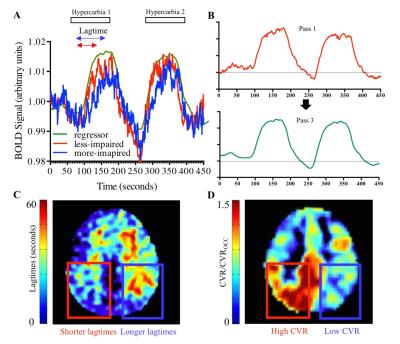 |
Time delay processing of BOLD cerebrovascular reactivity data in patients with moyamoya pre- and post-surgical revascularization reveals a potential new indicator of vascular compliance 
Jennifer Watchmaker, Blaise Frederick, Meher Juttukonda, Sarah Lants, Larry Davis, Matthew Fusco, Manus Donahue
Structural and BOLD-weighted hemodynamic imaging was performed in patients with intracranial steno-occlusion due to moyamoya disease before and after surgical revascularization. A novel data-driven time-delay analysis was performed using cross-correlation of functional imaging data to find the time at which maximum correlation occurs between the BOLD signal from each voxel and a reference regressor. This provides a novel metric of hemodynamic impairment (lagtime) that may be indicative of vascular smooth muscle dysfunction and therefore delayed reactivity. We found that in patients with successful revascularization on angiography, lagtimes decreased, and in patients with unsuccessful revascularization and progressive disease, lagtimes increased.
|
15:42
|
1238.
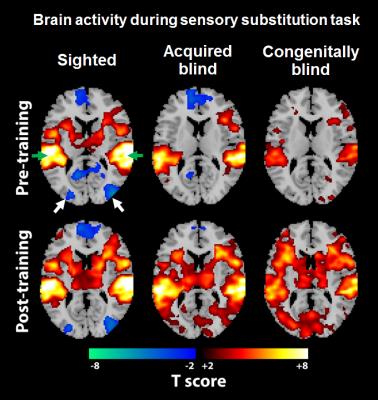 |
Top-down modulation in the visual cortex negatively correlates with duration of blindness and reaction time during sensory substitution 
Kevin Chan, Matthew Murphy, Jasmine Kashkoush, Amy Nau
Visual cortex functionality in the blind has been shown to shift away from sensory networks toward task-positive networks that are involved in top-down modulation. However, how such modulation is shaped by experience and reflected behaviorally remains unclear. Using blood-oxygenation-level-dependent functional MRI with a sensory substitution task, we found that top-down visual cortex activity negatively correlates with duration of blindness and reaction time. Our results suggest that alterations in top-down brain activity due to visual deprivation progress as a function of time. Furthermore, the degree of top-down activity in the visual cortex may reflect the speed of performance during sensory substitution.
|
15:54
|
1239.
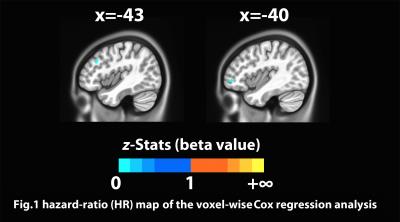 |
Functional connectivity of DLPFC circuits predicts cocaine relapse 
Tianye Zhai, Hong Gu, Yihong Yang
TMS targeting the DLPFC has been shown to effectively manipulate inter-temporal behaviors in healthy individuals and drug-using behaviors in cocaine users. However, the neural mechanism through which the DLPFC is involved in the alteration of these behaviors remains unclear. In the current study, we utilized resting-state fMRI to investigate the relationship between the DLPFC functional connectivity and relapse in cocaine addiction. Our voxel-wise Cox regression analyses revealed that two DLPFC circuits have protective effects against cocaine relapse.
|
16:06
|
1240.
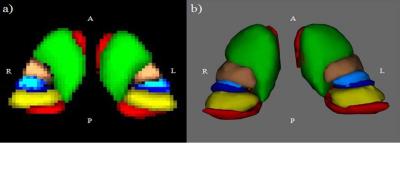 |
Thalamic functional connectivity in Multiple Sclerosis: the role of temporal thalamic sub-region in maladaptation 
Paola Valsasina, Alessandro D'Ambrosio, Milagros Hidalgo, Elisabetta Pagani, Bruno Colombo, Mariaemma Rodegher, Andrea Falini, Giancarlo Comi, Massimo Filippi, Maria Rocca
We compared resting state (RS) functional connectivity (FC) of five thalamic sub-regions (frontal, motor, post-central, occipital and temporal) between patients with multiple sclerosis (MS) and healthy controls. There was an overall increase of intra- and inter-thalamic RS FC for almost all thalamic sub-regions, apart from the temporal thalamic sub-region, which showed reduced intra-thalamic RS FC and higher RS FC with the fronto-parietal somatomotor cortex. Compared to cognitively preserved, cognitively impaired MS patients had lower RS FC between thalamic sub-regions and caudate nucleus, anterior cingulate cortex, as well as higher RS FC between thalamic sub-regions and several temporal areas.
|
16:18
 |
1241.
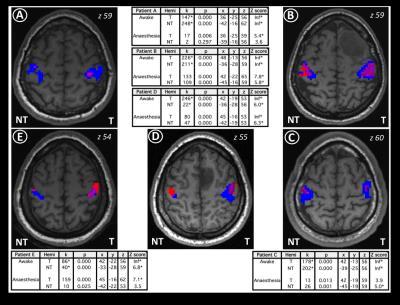 |
Acquisition of sensorimotor fMRI under general anaesthesia in neurosurgical patients: evaluation of the effect of anaesthesia on the BOLD response. 
Adam Kenji Yamamoto, Joerg Magerkurth, Laura Mancini, Mark White, Anna Miserocchi, Andrew McEvoy, Ian Appleby, Martin Smith, John Thornton, Nikolaus Weiskopf, Tarek Yousry
fMRI performed intra-operatively has the potential to significantly improve the outcomes from neurosurgery. The question remains however as to whether the BOLD signal can be detected in anaesthetised patients and what effect anaesthesia has on the response. In 5 patients with brain tumours anaesthetised for surgery we performed a passive sensorimotor fMRI paradigm. Anaesthesia resulted in a reduction in the BOLD response relative to the awake state, but also reduced the variance in the statistical model resulting in significant, accurate activation in all patients. We conclude that the fMRI BOLD signal can be accurately detected in anaesthetised neurosurgical patients.
|
16:42
|
1242.
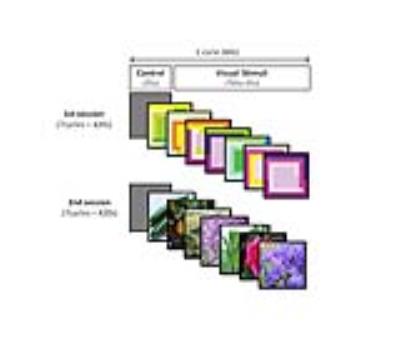 |
Olfactory suggestion capacity of colors: a functional MRI study 
Céline Charroud, Muriel Jacquot, Romain Tonnelet, Julie Boyer, Léa Nehmé, Faustine Noël, Jacques Felblinger, Marc Braun, Gabriela Hossu
We know that colors modify odor’s perception. It demonstrates that colors arrangement (chromatic cards) could evoke the appropriate odor, but we have not neural evidence of these chromatic cards olfactory suggestion capacity. Our goal is to compare the olfactory suggestion capacity of picture with that of chromatic arrangements using functional MRI paradigm. We show that chromatic card visualization could suggest an odor more efficiently than picture visualization. Our results support the involvement of multiple cognitive processes (olfactory, emotional, visuospatial, language, memory, taste) which interact to produce olfactory suggestion from colors visualization. Therefore, chromatic card application could be varied (health, marketing…).
|
16:54
|
1243.
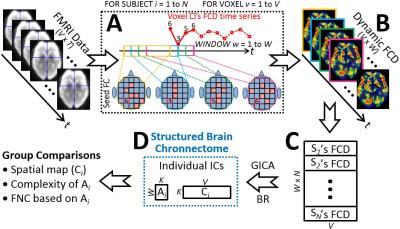 |
Structured Brain “Chronnectome” Reveals New Brain Dynamic Patterns for Early Detection of Alzheimer’s Disease 
Han Zhang, Xiaobo Chen, Lichi Zhang, Dinggang Shen
To understand dynamics of human brain connectome, we introduce a novel method named “structured brain chronnectome (SBC)”, which measures spatiotemporal architecture of dynamic functional connectivities, a pivotal mechanism for human to adapt to the outside world. From dynamic view angle, with graph theoretic analysis and blind-source separation, we detect meaningful SBCs with typical and atypical configurations compared with traditional networks. They reflect high-order brain functional organization. By applying SBC to an Alzheimer’s disease progression data, we revealed pre-symptomatic brain high-level function alterations from early mild cognitive impairment subjects which are difficult to detect using traditional methods.
|
17:06
|
1244.
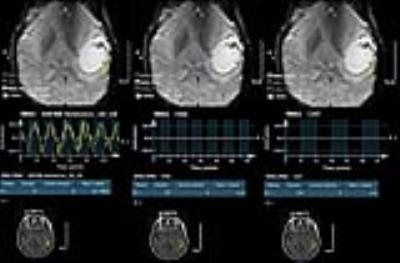 |
Silent Sentence Completion Paradigm Shows Superiority in Localization of Wernicke’s Area and Changes in Functional Activation in the Distinct Language Paradigms Correlate with Key Genomic Markers: A Prospective Study 
Kamel El Salek, Islam Hassan, Scott Faro, Srishti Abrol , Aikaterini Kotrotsou, Feroze Mohamed, Pascal Zinn, Wei Wei, Nan Li, Ashok Kumar, Jeffrey Weinberg, Jeffrey Wefel, Shelli Kesler, Ho-Ling Anthony Liu, Ping Hou, Jason Stafford, Sujit Prabhu, Raymond Sawaya, Rivka Colen
The reliability of fMRI for preoperative mapping of language areas depends on the paradigms used, as different tasks harness distinct capabilities to activate areas of speech processing. By comparing 3 language tasks [Silent Sentence Completion (SSC), Category Naming (CAT) and Word Generation (FAS)], we seek to determine the most robust and consistent task in localizing Wernicke’s area. Further the association between genomic markers and functional activation was determined. We included 15 healthy volunteers and 35 patients with gliomas. Results demonstrated that SSC is superior compared to other language paradigms and a correlation exists between tumor genomics and functional activation signals.
|
17:18
|
1245.
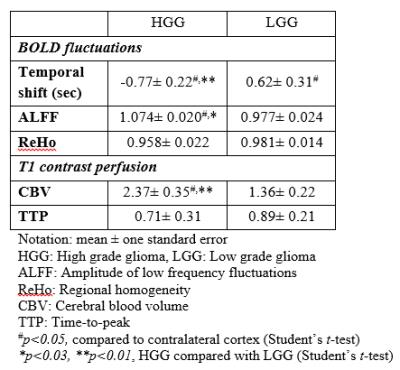 |
Altered BOLD fluctuations in gliomas and clinical possibilities 
Lalit Gupta, Rakesh Gupta, Prativa Sahoo, Pradeep Gupta, Rana Patir, Sunita Ahlawat, Indrajit Saha, Walter Backes
In this study, our primary objectives were to characterize the BOLD signal in gliomas using the temporal shift (TS), amplitude of low frequency fluctuations (ALFF) and regional homogeneity (ReHo) measures relative to the contralateral cortex, and to analyse the effectiveness of these measures in distinguishing high grade (HGG) from low grade glioma (LGG). Twenty-one patients with HGG and 13 patients with LGG were investigated. Abnormal hemodynamic fluctuations manifest in HGG, but not for LGG, and can be assessed using functional MRI. BOLD measures reflecting TS and ALFF show promise as an alternative to contrast-enhanced perfusion based techniques in future.
|
17:30
|
1246.
 |
Improved mapping of epileptic networks based on the correlation of BOLD-fMRI dynamic functional connectivity components with simultaneous EEG 
Rodolfo Abreu, Alberto Leal, Patrícia Figueiredo
We propose the use of BOLD dynamic functional connectivity (dFC) analyses to provide further insights into the dynamics of epileptic networks, in simultaneous EEG-fMRI studies. We performed brain parcellation using the AAL atlas and estimated dFC across brain regions using sliding-window correlation. We then tested different approaches for the extraction of functional networks related with the EEG epileptic activity. We found that PCA is a suitable tool to disentangle functional connectivity changes of different origins, and that epilepsy-related networks may be accurately identified based on the correlation of their weights time-courses with metrics of EEG epileptic activity in four patients.
|
|











